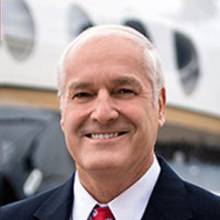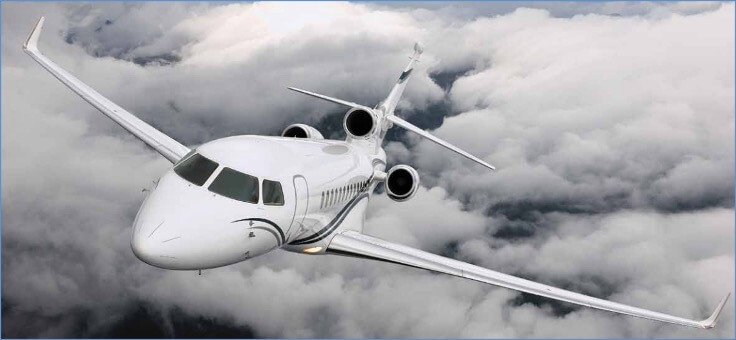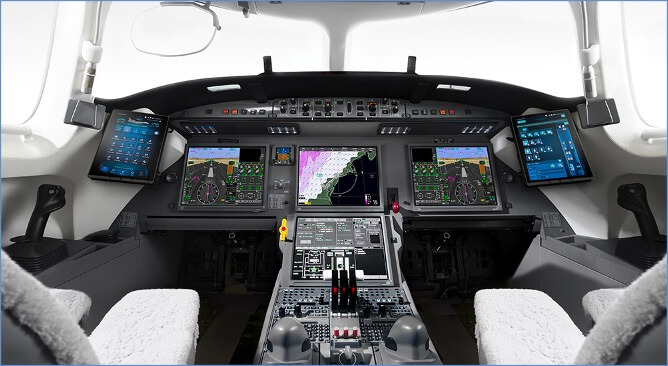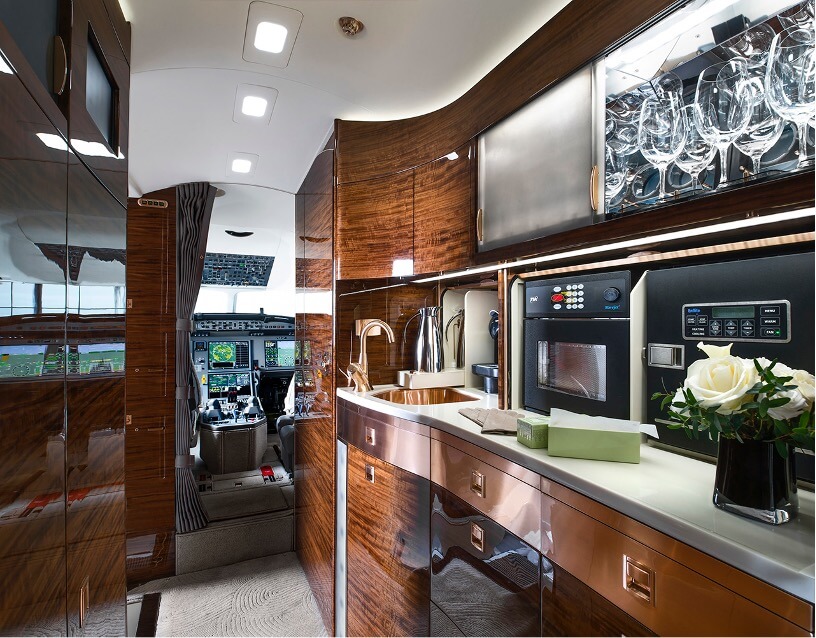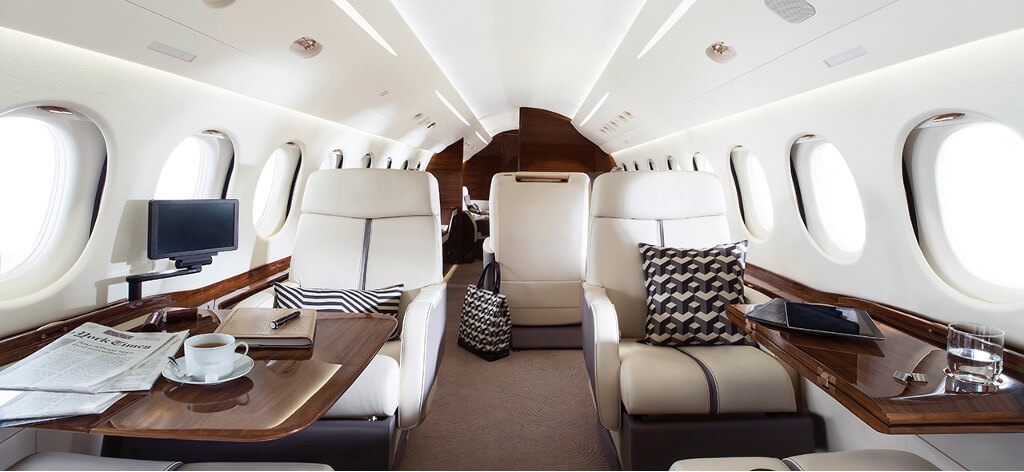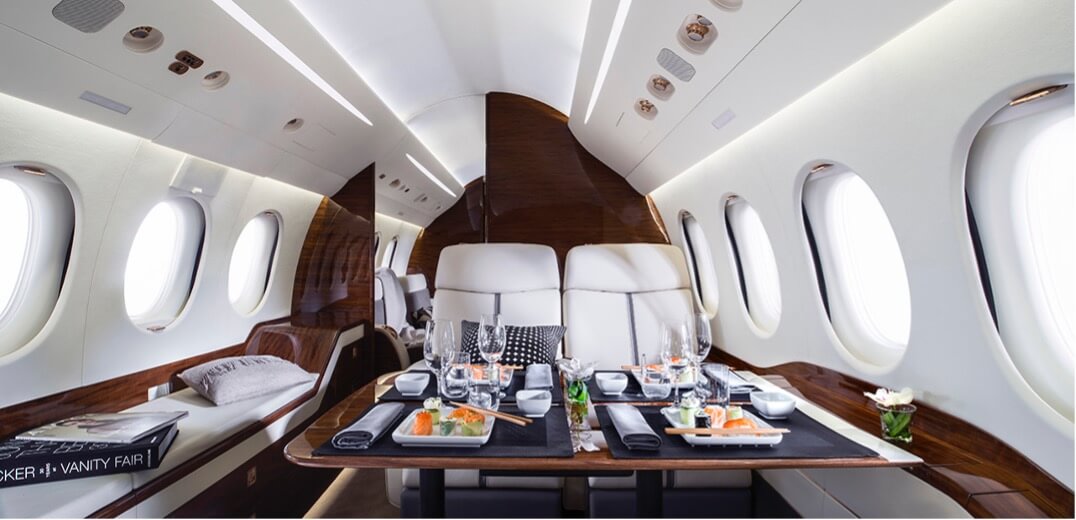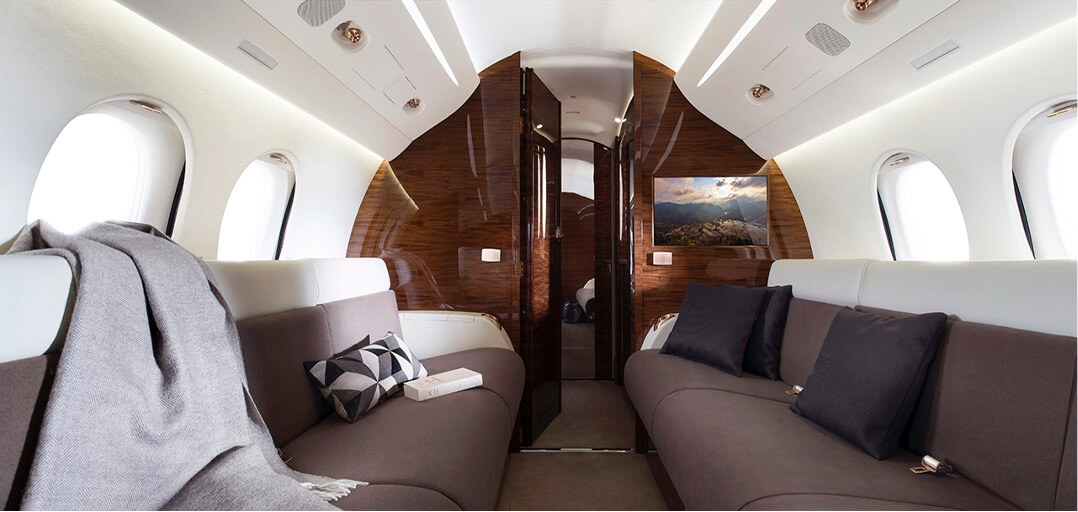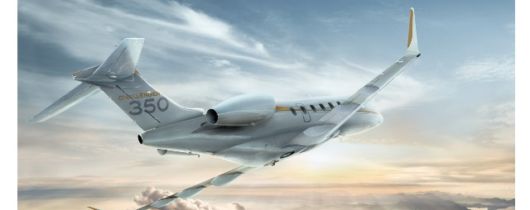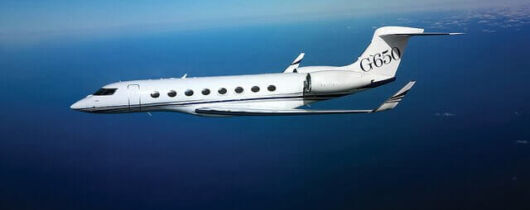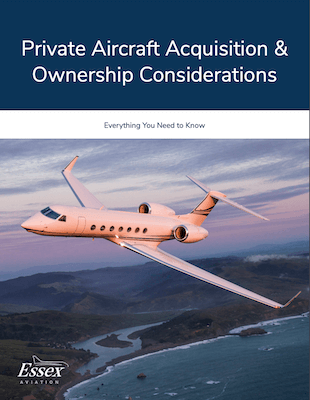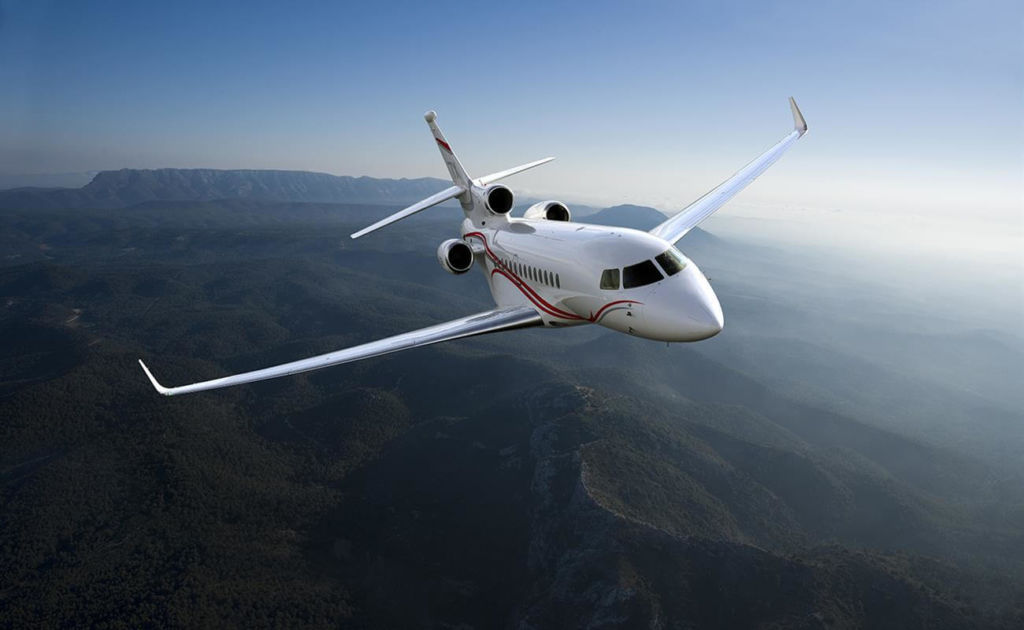
With a maximum range of 5,950 nautical miles, the Dassault Falcon 7X belongs to an elite class of ultra-long-range business jets. Manufactured by Dassault Aviation — a French aerospace company known for its outstanding military and private aircraft — the 7X is known for its luxury, efficiency and style.
In this aircraft review, we’ll take a comprehensive look at the Falcon 7X: technical specifications, design options, technology, investment costs and more.
Interested in the Dassault Falcon 7X?
The Falcon 7X at a Glance
| Maximum Range | 5,950 nm / 11,020 km |
| Top Speed | 0.90 Mach / 600 KTAs / 1112 km/h |
| Typical Cruise Speed | 0.80 Mach / 534 KTAs / 988 km/h |
| Maximum Altitude | 51,000 ft / 14,545 m |
| Cabin Dimensions | |
| Length | 39 ft 1 in / 11.91 m |
| Height | 6 ft 2 in / 1.88 m |
| Exterior Dimensions | |
| Length | 76 ft 8 in / 23.38 m |
| Wingspan | 86 ft / 26.21 m |
| Height | 26 ft 2 in / 7.96 m |
| Passengers | 12–16 |
Cockpit Design
Photo Credit: Dassault Falcon Jet Corporation
According to Dassault, the Falcon 7X’s EASy flight deck “changed the way pilots fly business jets.” Indeed, when the Falcon 7X was first brought to market, Dassault was a leader in using a jet fighter-style independent side-stick to control the aircraft, as opposed to the traditional — and space-consuming — control column and yoke design. And the jet fighter-inspired design doesn’t end there: The Falcon 7X is the first business jet in the world to be equipped with a Digital Flight Control System, which is designed to allow for more precise handling, reduce pilot workload and mitigate the effects of turbulence.
Newer Falcon 7X models feature either the EASy II or the EASy II+, which is the newest generation of Dassault’s EASy flight deck, incorporating their proven avionics platform and navigation capabilities, including the Honeywell Primus Epic System.
Technical details aside, due to the Falcon 7X’s spacious cockpit layout, Sherpa-lined seats and simplistic design with three large display units, many consider it to be one of the cleanest and most attractive cockpits of any business jet on the market today.
Cabin Design
When the Falcon 7X was first introduced, it featured the largest cabin of all Dassault aircraft, with a 6’2” ceiling and a wall-to-wall width of 7’8”. The Falcon 7X ushered in a new era for Dassault, one characterized by increased emphasis on ergonomics, cabin noise reduction and custom cabin design; this new era, again, helped cement Dassault as a formidable competitor in private and business aircraft manufacturing.
Upon boarding the Falcon 7X, passengers will pass through the galley, which typically includes a spacious stone countertop, brushed metal fixtures, a full sink and other appliances. The galley is able to accommodate everything from light snacks and refreshments to full-course dinners.
Photo Credit: Dassault Falcon Jet Corporation
Opposite the galley is capable space for a full-sized crew area, so additional crew members can rest during long-haul flights. The galley area also includes a forward lavatory for pilots and crew members and can be closed off from the main cabin via a sliding door.
The Falcon 7X is organized into three zones with a variety of custom floorplan options available, able to accommodate anywhere from 12 to 16 passengers. For the purposes of this review, we’ll look at the standard floorplan configuration.
The first zone features four ergonomically adjustable executive seats arranged club-style around foldout sidewall tables. Travelers who have flown on older model Falcons will immediately notice how bright and airy the main cabin feels. This is because the Falcon 7X has 28 large windows — 40% larger than previous Falcon models.
Photo Credit: Dassault Falcon Jet Corporation
The second zone features a conference-style seating arrangement, where passengers can host business meetings, get caught up on work or share a meal around an electronic, folding hi-lo table. Opposite the seating is a sidewall credenza and lower cabinets for additional storage.
Photo Credit: Dassault Falcon Jet Corporation
The four seats in the second zone — which are slightly narrower than the club seats in the first zone — can be converted to a bed, in order to create an additional sleeping area to accommodate overnight journeys.
Photo Credit: Dassault Falcon Jet Corporation
The third zone, situated toward the rear of the aircraft, is a stateroom featuring two divans that can also be converted into beds. All three zones offer separate climate controls, enabling each passenger to set their own temperature for maximum comfort.
Photo Credit: Dassault Falcon Jet Corporation
Past the third and final zones, travelers will find the aft lavatory, fitted with polished glass, brushed aluminum and other high-end finishes, creating a luxurious, spa-like atmosphere. The aft lavatory can even include an optional shower installation.
Finally, the baggage area at the very rear of the aircraft features a full-length wardrobe.
While many standard designs are popular, Dassault also provides buyers with a wide range of design options. Using proprietary CATIA design engineering software, buyers can customize the 7X’s layout, color scheme, materials and more, all with assistance of Dassault’s in-house team of designers, cabinetmakers and technicians.
Technology
The Falcon 7X’s cabin technologically is as advanced as its cockpit and features enhanced cabin connectivity, office-in-the-sky access, climate control system, acoustics technology, an HD entertainment system and user-friendly cabin management controls.
Dassault is known for its innovation, and the Falcon 7X is no exception: It was the first business aircraft to be designed digitally and to use digital flight controls and is considered a benchmark for its fuel efficiency among ultra-long-range business jets.
Exterior Design
The Dassault Falcon 7X’s exterior design is uniquely identified by its three-engine configuration and high-transonic wing design, which boasts a 30% efficiency gain over previous Falcon wing designs. The high-transonic wing not only enables the Falcon 7X to fly at high Mach speeds and high altitudes without compromising fuel economy; it also enables the 7X to land at the slowest approach speeds of any business jet its size, enabling it to safely manage access to shorter runways.
Acquisition Cost
As a result of its immediate success and comparatively limited production, the residual value of a Falcon 7X has done considerably well. The current new list price for a 7X would range just over $50M.
Most would agree that the Falcon 7X, when it was originally presented to the market, was designed to compete with the Bombardier Global XRS (now known as the Global 6000) and the Gulfstream G550. The advertised range of the Falcon 7X with eight passengers is 5,950 nm at Mach .80, which does place the 7X within a narrow field of competition among ultra-long-range business aircraft.
Direct Operating Costs
Note: All direct operating costs listed are estimated; actual expenses will vary based on total annual flight hours.
|
Fuel |
Approximately $1,640 per hour |
|
Maintenance |
Approximately $1,476 per hour |
|
Engine Overhaul |
Approximately $903 |
|
Miscellaneous |
Approximately $630 per hour |
|
Total Direct Costs |
Approximately $4,649 per hour |
Fixed Costs
|
Crew |
Approximately $715,000 (with benefits and FT Flight attendant) |
|
Crew Training |
Approximately $106,000 |
|
Hangar |
Approximately $81,800 |
|
Insurance |
Approximately $61,540 |
|
Miscellaneous |
Approximately $35,531 |
|
Total Fixed Costs |
Approximately $999,871 |
Is a Falcon 7X Right for You?
The primary objective when purchasing any business aircraft should be to choose a model that best meets as many of your travel requirements as possible and provides all of the comfort and amenities you desire. Uniquely, the Dassault 7X is designed to offer ultra-long-range capability without compromising short-field performance when you require access to smaller airports. . If, however, you do not require long-range capability and want to lessen your operating costs, you might want to consider the greater efficiency and lower operating costs of a smaller Falcon model.
The Falcon 7X is designed in such a way that it has the capability to perform and meet the demands of many different types of missions, however, it is most fuel efficient during longer range trips — that is, trips with four or more flight hours between stops. Such trips take advantage of the 7X’s three Pratt & Whitney engines, which allow for lower fuel burn when at higher altitudes.
How to Acquire a Dassault Falcon 7X
Does the Dassault Falcon 7X have what it takes to meet your unique travel requirements? If so, you’ve come to the right place. Essex Aviation group has extensive experience managing Falcon 7X acquisitions — as well as acquisitions for countless other aircraft models — for high-net-worth clients. That means we understand the acquisition process inside and out and are more than prepared to represent your needs, negotiate costs and ensure you get exactly what it is you’re looking for. Contact us today to get started.



